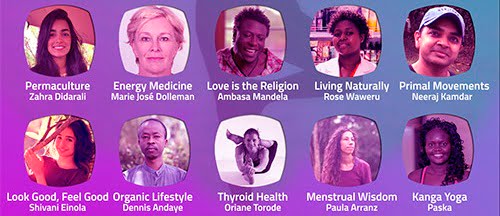Women of Colour In Wellness
Women of Colour in Wellness is a great introduction to race, privilege and cultural appropriation in the wellness industry. Without delving too deep into these concepts politically or analytically, the author provides us with an easily accessible glimpse into the lived experiences of five women of colour living in Canada, the United States and the United Kingdom: Sashah, Alica, Liz, Sachiell and Parm. They span the roles of yoga teacher, counsellor, social worker, grief guide, energy healer, meditator, massage therapist, skincare entrepreneur, naturopathic, nutrition coach, and much more. The book is a compilation of interviews originally recorded for audio, so the women’s stories and thoughts are shared one by one, in their own words.
Overall a common trend was the feeling of being a minority amongst a primarily white population of yoga teachers, students, coaches, therapists, etc. This is difficult both when you are a practitioner and find trends of underrepresentation coupled with a lack of awareness in your workspace; and as a student or someone looking for therapy, and have trouble finding someone you relate with. Discrepancies in pay are stark too, as Liz Andalong noted – many people of colour are not in the mainstream ‘wellness industry,’ but are working with non-profits as therapists or social workers and getting paid a lot less. On the other hand, it was noted that clients are rarely black or brown, largely due to ‘the intersection of wealth and race’ (Sachiell Ricketts). And in a white-dominated industry, more often than not, neither wellness products nor advice from therapists are catered to your particular needs if you don’t fit into the mould.
The women gave several suggestions on how to play your part in the wellness space to increase diversity, representation and respect. These include intentionally joining classes taught by people of colour and engaging with online content by voices of colour to understand diverse perspectives. For those in positions of privilege, make the effort to deconstruct your own privilege by reading and watching content to help you understand it better, and take action from a place of greater understanding. Employers and project leaders, think about who you employ, who is appearing on your media, and why – is there diversity? And if so, is it for token reasons of painting a picture, or is it because you truly see the value in having diversity and representation? Make the effort and leave aside the excuses that you could not find anyone – as Sachiell says, ‘how hard did you look, and how willing were you to disrupt what is considered normal?’
Several pertinent and usually politcally-charged topics are casually brought into the conversation, without going too deeply into them, which is a statement in itself – that it should be the norm to have these conversations and address these subjects. Some of the issues brought up include marijuana legality, grief, cultural appropriation, inclusivity, tokenising, colonisation, financial roadblocks, accessibility, imposter syndrome, body positivity, indigenous wisdom, and the difficulty of pricing your products and services as a woman of colour – should you price accessibly or ‘like a white man’? Some of the underlying and unaddressed, yet glaring, issues in the wellness industry are directly called out in these interviews – for example Sashah Rahemtulla asks ‘Does [yoga in the West] support people of Indian descent or does it just create this bubble of white people doing what they want with whatever they’ve found and made it work for them?’
A book interviewing people in the wellness space would be incomplete without some wellness advice and resources, of which there is an abundance in Women of Colour in Wellness. At the end of each profile, the interviewee shares a list of links, to their own work as well as other movers and shakers in the wellness community that are women of colour. I personally explored each and every one of these, and ended up finding a resource that will entirely change my workspace and two projects that I am co-leading. The women also shared some tips from their own areas of expertise, including on self-care, how to find support when going through grief, how to be a good supporter of another person going through grief, tapping into ancestral wisdom, being an ally, and some simple yet crucial daily nutrition tips.
Personally, though I would have loved a deeper analytical dive into the issues brought up, my outlook has been changed by this book and the resources provided – I plan to take some of Rachel Ricketts courses, and have brought these valuable conversations into two initiatives that I’m involved with. A few notes – the gender issue was not really addressed, which I was expecting given the book’s title, and if it turned out to not be relevant perhaps some men of colour could have been interviewed too. Also, it would be good to clarify from the start that the book specifically gives perspectives from Canada, the US and the UK, especially Vancouver. As a woman of colour in wellness in Kenya myself, I know that there are perspectives from the ‘developing world,’ that would be valuable to share too – the wellness space here too, is white-dominated! Perhaps these can then be suggestions for future books in the series – men of colour in wellness, and voices from the global south, particularly post-colonial countries. Finally, I would love to hear even more black voices – of the five women interviewed, three were of Asian descent, and I just felt the need for even more representation of black African descent.
Women of Colour in Wellness is a refreshing, light read that addresses deeply rooted issues in the wellness industry in a familiar and personal way. No views are imposed on the reader as it is presented entirely as the subjective opinions of the featured women, however the reader’s eyes are opened by these voices that are so under-represented yet have a lot to teach. One is given a taste of how it feels to be a woman of colour in wellness, no glossing or varnishing, right from the horses’ mouths. The reader is then invited to think further, ponder deeper, and explore for themself. It was very interesting for me to read the five women’s different points of view and experiences, and their unique reactions to racism and a white-dominated industry that has many roots in the global east – from which it has been imported and adapted to suit the western lifestyle.
The book was so easy to read, so accessible, that it was no effort at all to flick through over a few nights, while eagerly exploring the resources shared. It is colourful, full of pictures and quotes, and beautifully laid out. I would highly recommend it to anyone in any way associated with the wellness industry – whether a yoga student or a therapy client, a teacher or a coach, whatever your race or gender, this book will surely hold some insight for you. If you are a woman of colour, you will feel less alone having read of others’ experiences, and if not your eyes will be opened to how you can consciously change your own interactions with the community.
Recommend0 recommendationsPublished in Uncategorized


